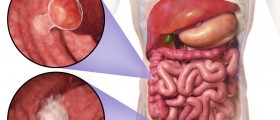What is bile duct cancer?
There are a lot of people all over the United States who do not know what the bile duct is or where it is located. People should know that the bile duct is a small tube that extends from the liver to the small intestine. The role of this tube is to aid in the transport of bile to the small intestine in order for the digestive system to be able to break down fats in food more easily.
A certain cancer type that starts in this tube is known as bile duct cancer. Bile duct cancer is rare, but certain risk factors can increase the likelihood that a person will develop it. These include the digestive disease colitis, as well as some liver diseases. Both jaundice, a yellowing of the eyes and skin, and abdominal pain can be general indicators of bile duct cancer.

A lot of people connect this cancer type with liver cancer. However, bile duct cancer usually starts in the bile ducts that are not located in the liver. According to certain studies, 90% of all bile duct cancer cases are extrahepatic, originating outside of the liver. The remaining 10 percent of cases will start in the bile ducts inside the liver.
When a doctor diagnoses a patient with this type of cancer, he or she will next determine in what stage the cancer is in. In order to do that, the doctor will use a well known and standardized system of classifying the spread and extent of the cancer. It is important to determine the stage of cancer because that will allow the medical team to design the treatment plan and clarify the prognosis.
Stages of bile duct cancer
People should know that there are five stages of bile duct cancer.
The first stage of bile duct cancer is stage 0. It is also known as carcinoma in situ. At this stage, tha patient is still dealing with a noninvasive cancer. In stage 0, the cancer is still confined to the innermost layer of the bile duct and has not spread anywhere beyond it.
In stage I of bile duct cancer, the tumor has started to invade other layers of the wall of the bile duct. However, in this stage, the tumor has not gone any further than that. Distant organs and lymph nodes are still intact.
Stage II of bile duct cancer is separated into two stages. These are stage IIA and IIB. In stage IIA, the tumor has spread to the liver, gallbladder and pancreas. In stage IIB, the cancer is present in adjacent lymph nodes, the bile duct, bile duct wall, liver, gallbladder, pancreas or either side of the hepatic artery or portal vein.
Just like stage II, stage III is also separated into two stages; stage IIIA and IIIB. In stage IIIA, the cancer has spread to the main blood vessels on one side of the liver. However, lymph nodes and other organs are intact. In stage IIIB, the cancer is now deep in the tissue layers of the duct wall. It is highly possible that the cancer has broken through the wall and spread to the surrounding fat or liver tissue. It is also likely that other organs, like the colon or stomach, are affected by cancer at this stage.
The final stage of bile duct cancer is stage IV. This stage is separated into IVA and IVB as well. The main blood vessels of the liver or the branches of these veins are affected by cancer in stage IVA. In stage IVB, lymph nodes far away from the cancer are affected by it. Even the lungs or bones may be cancerous in stage IVB.

















Your thoughts on this
Loading...